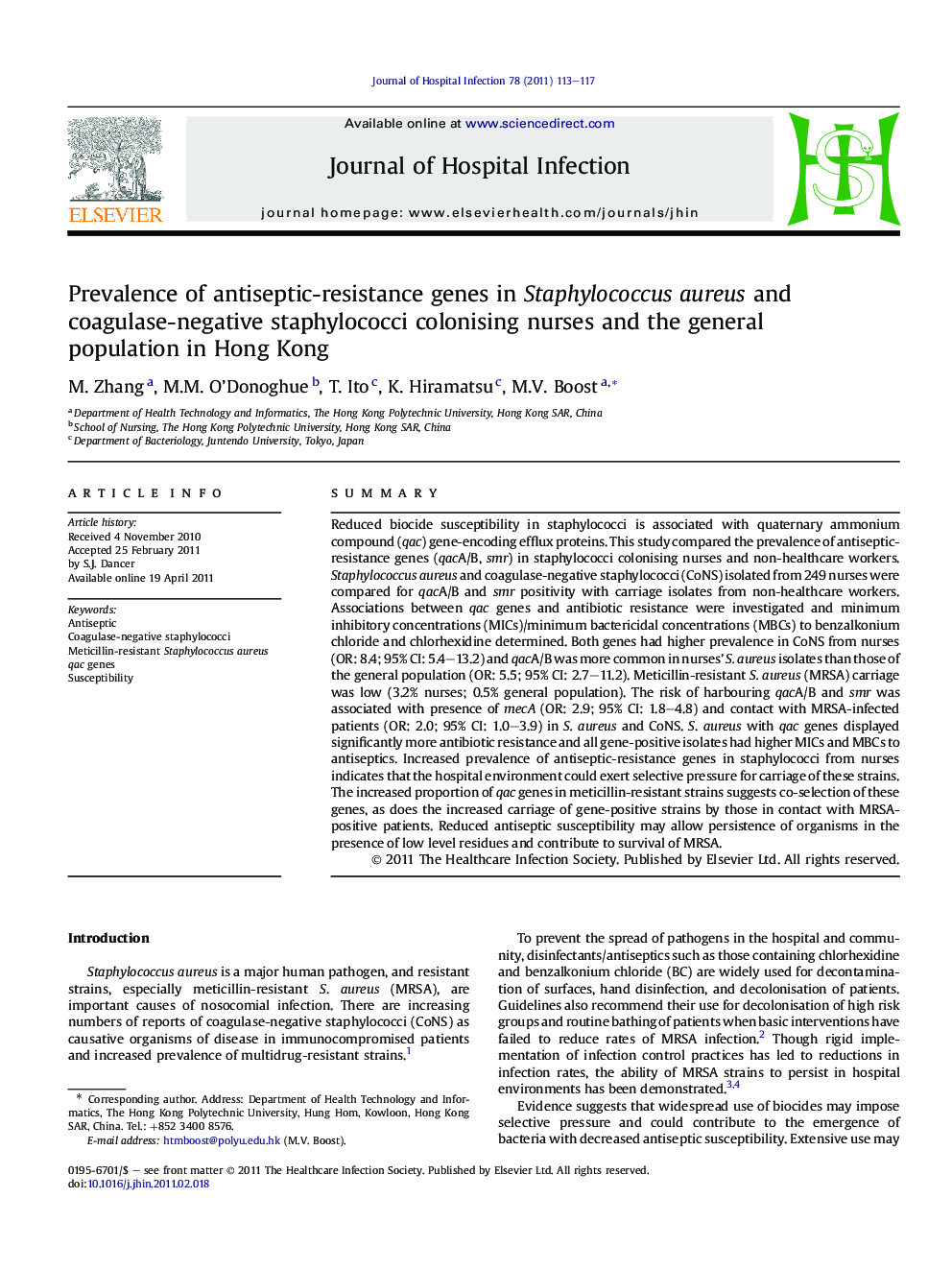| کد مقاله | کد نشریه | سال انتشار | مقاله انگلیسی | نسخه تمام متن |
|---|---|---|---|---|
| 3372343 | 1219255 | 2011 | 5 صفحه PDF | دانلود رایگان |

SummaryReduced biocide susceptibility in staphylococci is associated with quaternary ammonium compound (qac) gene-encoding efflux proteins. This study compared the prevalence of antiseptic-resistance genes (qacA/B, smr) in staphylococci colonising nurses and non-healthcare workers. Staphylococcus aureus and coagulase-negative staphylococci (CoNS) isolated from 249 nurses were compared for qacA/B and smr positivity with carriage isolates from non-healthcare workers. Associations between qac genes and antibiotic resistance were investigated and minimum inhibitory concentrations (MICs)/minimum bactericidal concentrations (MBCs) to benzalkonium chloride and chlorhexidine determined. Both genes had higher prevalence in CoNS from nurses (OR: 8.4; 95% CI: 5.4–13.2) and qacA/B was more common in nurses’ S. aureus isolates than those of the general population (OR: 5.5; 95% CI: 2.7–11.2). Meticillin-resistant S. aureus (MRSA) carriage was low (3.2% nurses; 0.5% general population). The risk of harbouring qacA/B and smr was associated with presence of mecA (OR: 2.9; 95% CI: 1.8–4.8) and contact with MRSA-infected patients (OR: 2.0; 95% CI: 1.0–3.9) in S. aureus and CoNS. S. aureus with qac genes displayed significantly more antibiotic resistance and all gene-positive isolates had higher MICs and MBCs to antiseptics. Increased prevalence of antiseptic-resistance genes in staphylococci from nurses indicates that the hospital environment could exert selective pressure for carriage of these strains. The increased proportion of qac genes in meticillin-resistant strains suggests co-selection of these genes, as does the increased carriage of gene-positive strains by those in contact with MRSA-positive patients. Reduced antiseptic susceptibility may allow persistence of organisms in the presence of low level residues and contribute to survival of MRSA.
Journal: Journal of Hospital Infection - Volume 78, Issue 2, June 2011, Pages 113–117